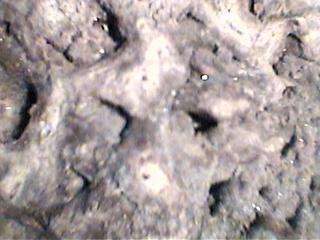
Near our home on Hallquist Ave. in Red Wing there are glacial boulders, a Cretaceous, Windrow formation, Iron Hill member landscape, and a massive underlying Paleozoic dolostone layer. Between the dolostone and the Iron Hill sandstone, there are scattered irregularly shaped siliceous boulders. They do not show evidence of having been eroded by glacial actions. Hardness is extreme. They cannot be scratched with the tip of a Victorinox knife blade tip, nor the wheel of a household glass cutter. |
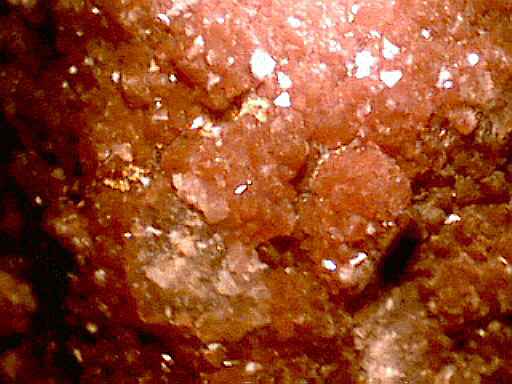
An Intel microscope camera at 10X magnification was used to capture this image. You see quartz crystals. A mineralogist would call them amethyst. The crystals are scattered in patches over the surface of the boulder. |
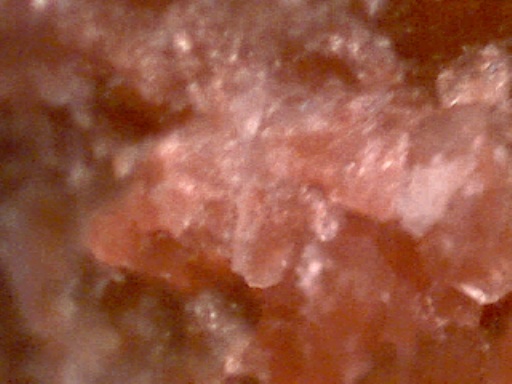
Here the microscope is at 60X.
|
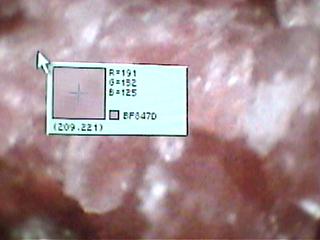 Program DotColor 3 was used to identify quartz crystal color at a point in the 60X microscope image shown above. The RGB color values at one point in the above image are 194,132,125. The lower left panel has those values. An Amethyst gemstone image was selected from among many shown in websites and the RGB colors 139,88,180 were identified. The panel below right has those RGB values. |
|
|
|
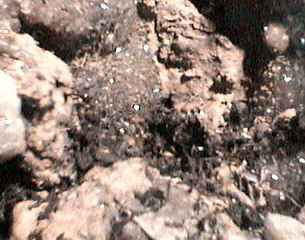 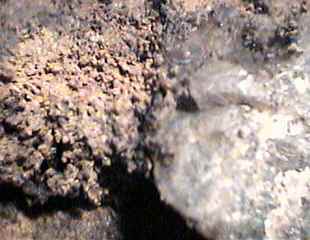
|
| In the particular group of boulders I have not described adequately there are ones which look as though they were formed in a siliceous reef. What appear to be holes at an upper surface are actually solution channels which penetrate the boulder. |
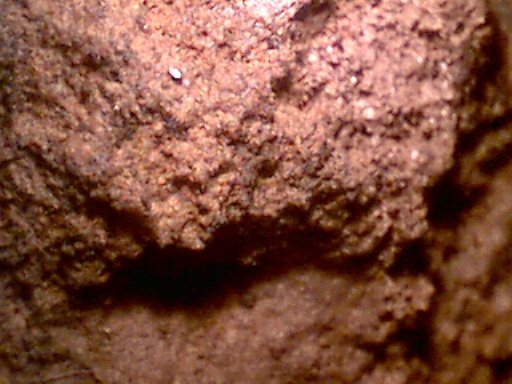
In many instances, the solution cavities have been filled with reddish brown sandstone. For this and the following example, a microscope at 10X was used. Individual fine sandstone grains are observed readily. |

I do not know how the solution cavities were formed. The cavities leave lots of room for class discussion. |
|
|